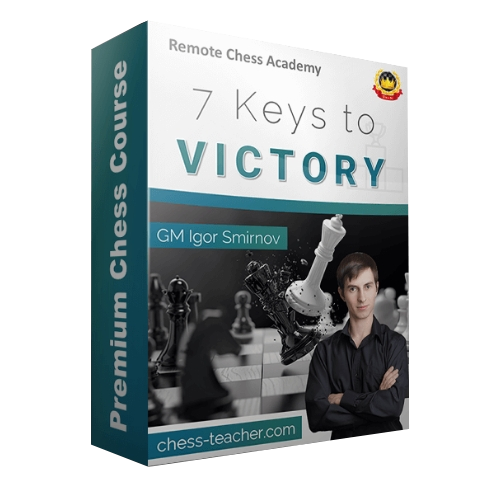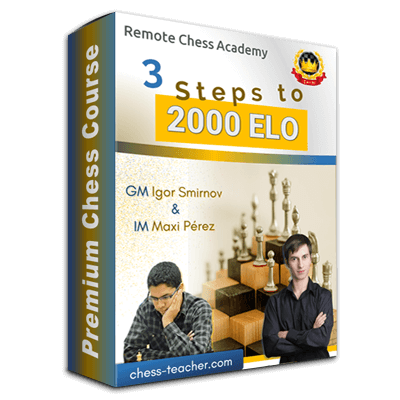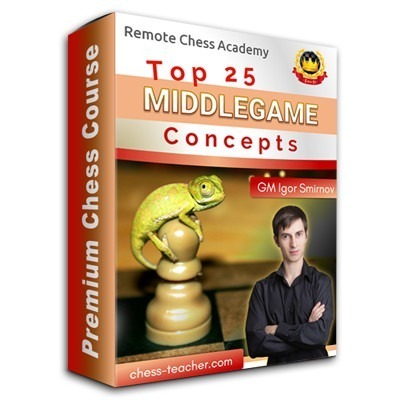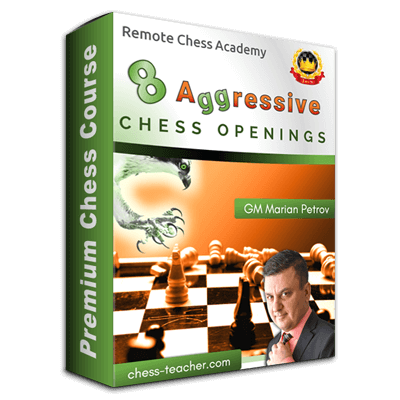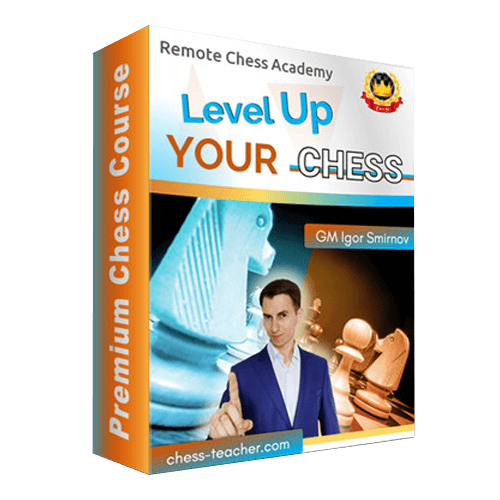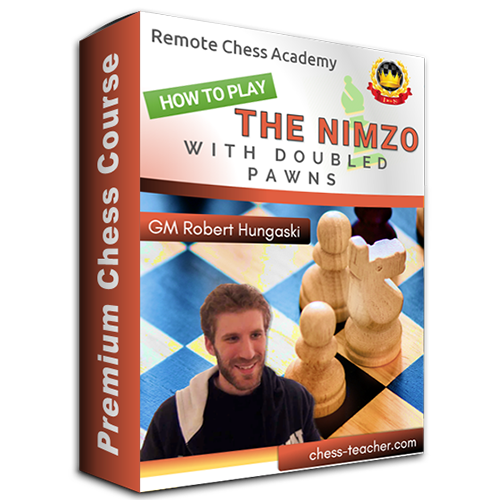7 keys to victory can help you improve your game and your thinking process during the game. All the ideas are explained with simple examples to understand then if you are totally beginner.
7 Keys to Victory
You can find a lot of different chess rules and instructions on how to play chess, however there only 6 main things which you should do while you play a game of chess. In this comprehensive chess course, GM Igor Smirnov explains these rules one by one. Similarly, he explains in detail one more important thinking rule which will help your game to grow up on the next level! Thus, on Remote Chess Academy, we created this course, called 7 keys to victory.
7 keys to victory can help you improve your game and your thinking process during the game. All the ideas are explained with simple examples to understand then if you are totally beginner.
However, the videos contain games from World Champions, like Kasparov, Kramnik, Tal, and other top-rated players, so this course is also suitable for more advanced players.
Key Topics Covered In This Course
The Key to Breakthrough
This lesson is called “The Key to Breakthrough”. We will analyze the first and most important principle of playing the game of chess. In fact, you already know this because we’ve just discussed it. This is “The Principle of Attack”.
- The Most Important Chess Rule
This lesson is called “The Most Important Chess Rule”. In the first lesson of this video course, we were talking about the importance of the attack. However, there is not always an attacking move at your disposal. For instance, in the starting position of the chess game, definitely, there is no way for the attack.
Even if we make one move or a couple of moves, there would still be no options for you on how you can possibly damage your opponent. What should you do in such cases? By the way, this is the most common situation in the chess game because, even though the attack is the greatest thing you can do, more often than not, there is no direct way for an attack.
So, here comes “The Principle of the Least Active Piece”. It says: Find the piece which is the least active and activate it, improve its position.
- Maximize Your Power
This lesson is called: “Maximize your power”. Let’s quickly recall what we were talking about in the previous lessons. First of all, we said you should attack your opponent.
Therefore, you focus your attention on the opponent’s half of the board and you ask yourself: How can I go to that territory and make some damage, hopefully, to take or attack something. However, in most of the positions, there’s no direct way to start the attack right away. What should you do then? In that case, you need to prepare your attack for the future; and, in order to do so, you need to activate your position.
- Becoming a Chess Terminator
In this lesson, you are going to learn how you can become a terminator in chess. Indeed, in chess games, sometimes, it’s crucial for your success to terminate your opponent.
And, of course, I don’t recommend that you do it in such a brutal way like Schwarzenegger did in his Terminator movies. But still, at times when you’re playing a game of chess, a certain opponent’s piece becomes really annoying for you, and then, it’s time to terminate it! How can you do that?
- Limitation is Domination
Who is going to be the attacker? Who is going to be the defender? And that depends on the activity of your forces. You wish to have your forces controlling the greatest quantity of the squares on the chessboard; and, therefore, to be the most active.
And the flip side of the same coin is that you wish the opponent’s pieces to be the least active and controlling the smallest amount of squares on the chessboard. So, here come those principles of activity that we’ve been talking about in the previous lessons. And this time, we’ll just talk about the flip side of the same coin.
- How to Control the Center
This lesson is called “How to Control the Center”. At first, this topic may seem very simple and straightforward. On the other hand, there are so many rules about this. In this quick lesson, we’ll just streamline this for you and, therefore, we’ll narrow down this broad subject into a very simple and practical guideline that you can follow in your practical games.
- The Key to Your Stable Progress
How to make sure that your chess progress is stable; that you play well all the time and, if you’re stronger than your opponent, you should be winning those games, without any exceptions.
- Practice
This final video is dedicated to practicing. Now, you already know all the main strategic principles of the game of chess. And, in this lesson, you’ll put them in practice, so that, when you start playing your practical games, and it’s your move, you’ll know exactly what you should be doing.
It’s going to be a pretty cool examination for you because we are going to see the games of Garry Kasparov and you’ll be analyzing his moves. I will be asking your opinion: How would you play in those positions? And you will try to guess the moves played by Garry Kasparov, who is one of the best chess players of all time.
Powerful Practical tasks
It is necessary to put the received knowledge into practice. There are 8 practical tasks (over 50+ games) in this course which will help you to understand and remember the ideas of the course better.
The training program has a detailed explanation on what and exactly how you should do the practical tasks.
